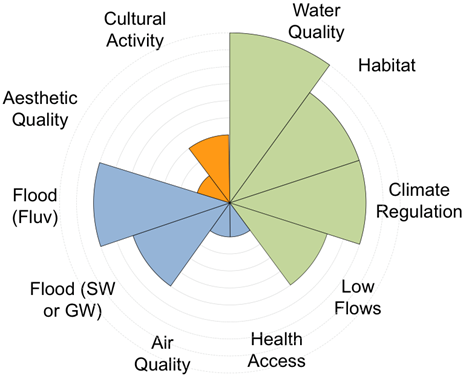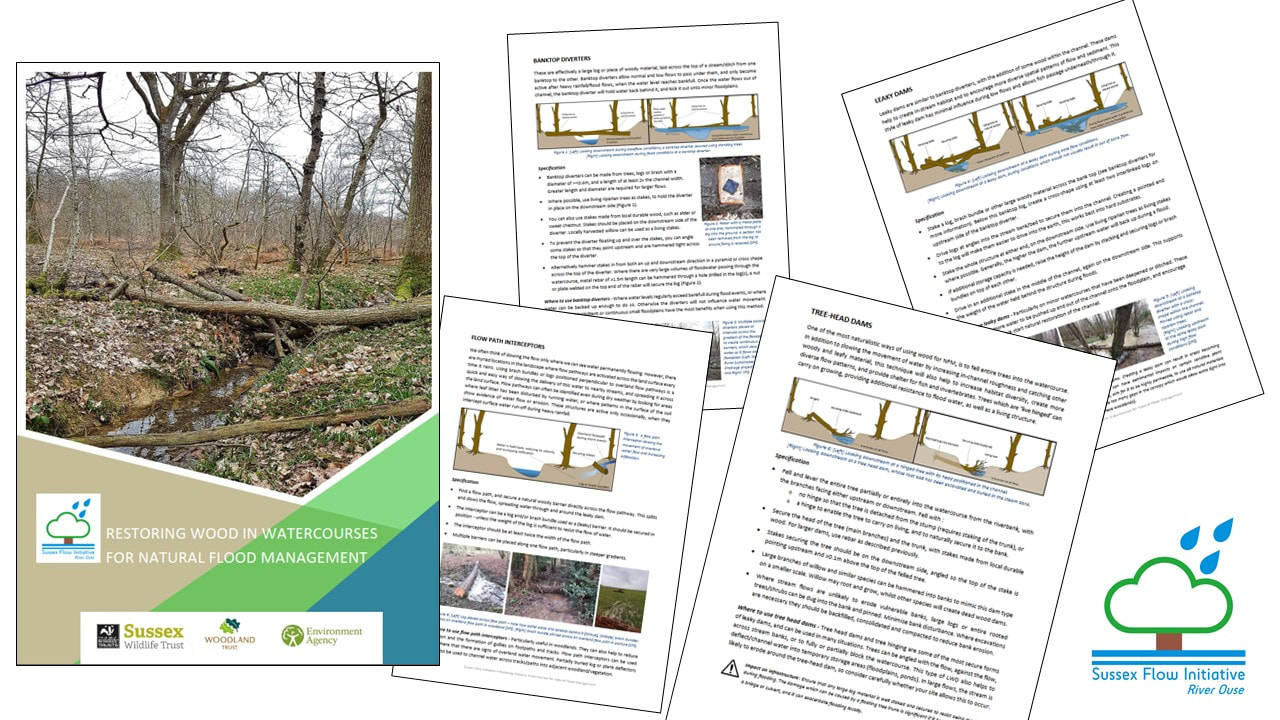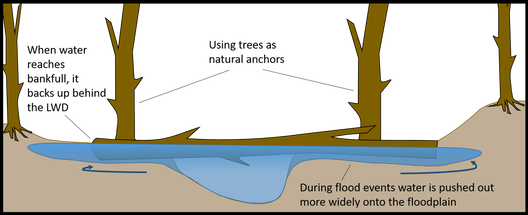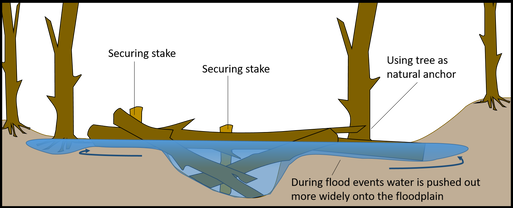|
Large Woody Debris (LWD), or leaky dams is one of the most utilised Natural Flood Management technique. In the right locations they can provide a cheap and easy way to reducing flood risk, particularly when applied at a catchment scale. The range of benefits these structures provide, is only matched by the diversity in their style and construction method. Ranging from naturalistic dams utilising materials from the site in which they sit, to heavily engineered structures made from fabricated materials. They all aim to reduce flood risk by intercepting the flow of water in watercourse and helping to restore river-floodplain connectivity, thereby reducing flood peaks, slowing water velocities and attenuating flow by storing water on the floodplain. At the Sussex Flow Initiative (SFI), we are interested in all of the benefits that leaky dams provide, but we are particularly excited about their potential for making our landscapes more resilient to the extreme and unpredictable events of climate change. The benefits wheels below (taken from the Environment Agency’s Working with Natural Processes evidence base) helps to illustrate just how many benefits leaky dams can have across a whole range of ecosystem services. SFI aims to create naturalistic structures that blend into the landscape, utilising local material where possible. There are a variety of types of the LWD, the three main types used by the project are outline below. Further information on these can be found in 'SFI's Leaky Dam Guidance Document'. Types of LWDBanktop diverters Large woody debris is positioned and fixed across the banktop in streams and ditches, engaging high flows, holding back water and encourage it out onto the floodplain. Leaky dams In addition to a banktop diverter, woody material is added into and secured within the channel. This therefore means the structures are active earlier, at lower flow rates. The leaky construction maintains the watercourses base flow and ensure there is still fish passage. Gully stuffing Woody materials is positioned and secured longitudinally within the channel to slow the flow of water and trap sediment. This type of LWD is typically used within relic drainage ditches within heathlands and woodlands. These naturalistic structures emulate the natural process of wind blown trees or the dams that would have been created by beavers before they were lost from our landscape 400 years ago. The images below show how these structures can could just be a collection of sticks to fall length trees secured in place, but they are all:
5 Comments
16/9/2022 11:59:25 am
Great ideas! This will certainly improve anyone's stamped concretes.
Reply
17/9/2022 06:37:56 am
Great article! Definitely going to save site for my future endeavors into planting.
Reply
Leave a Reply. |




 RSS Feed
RSS Feed
